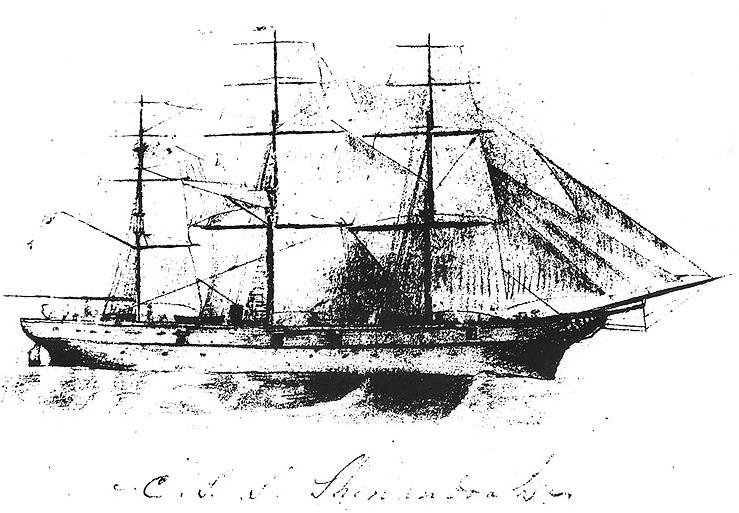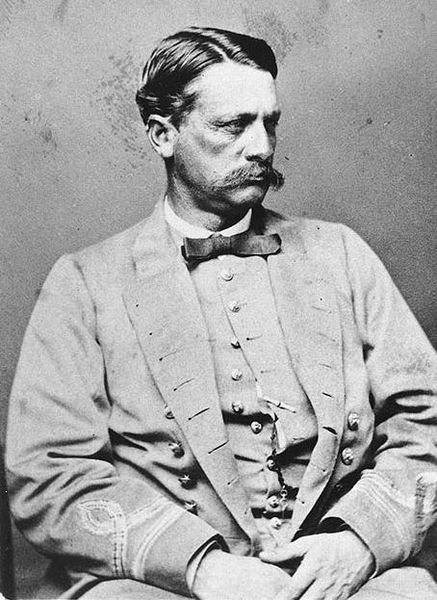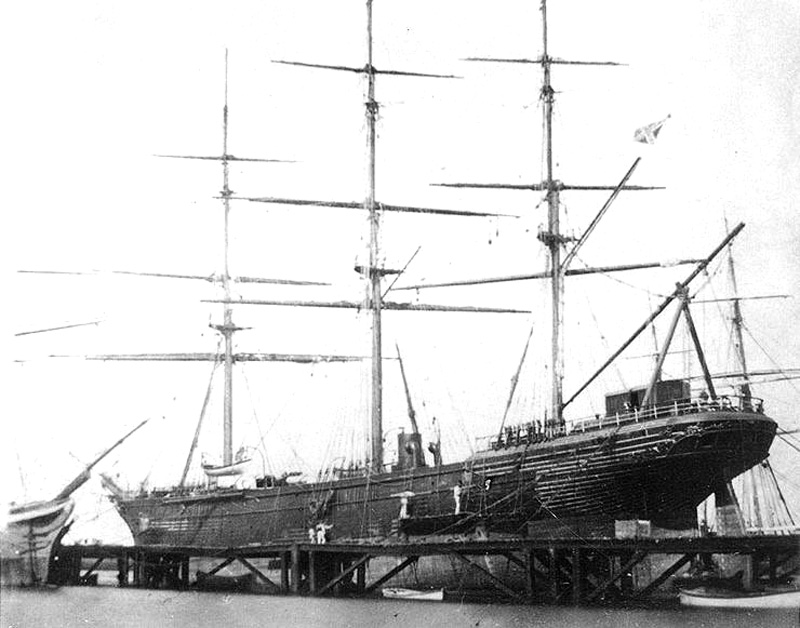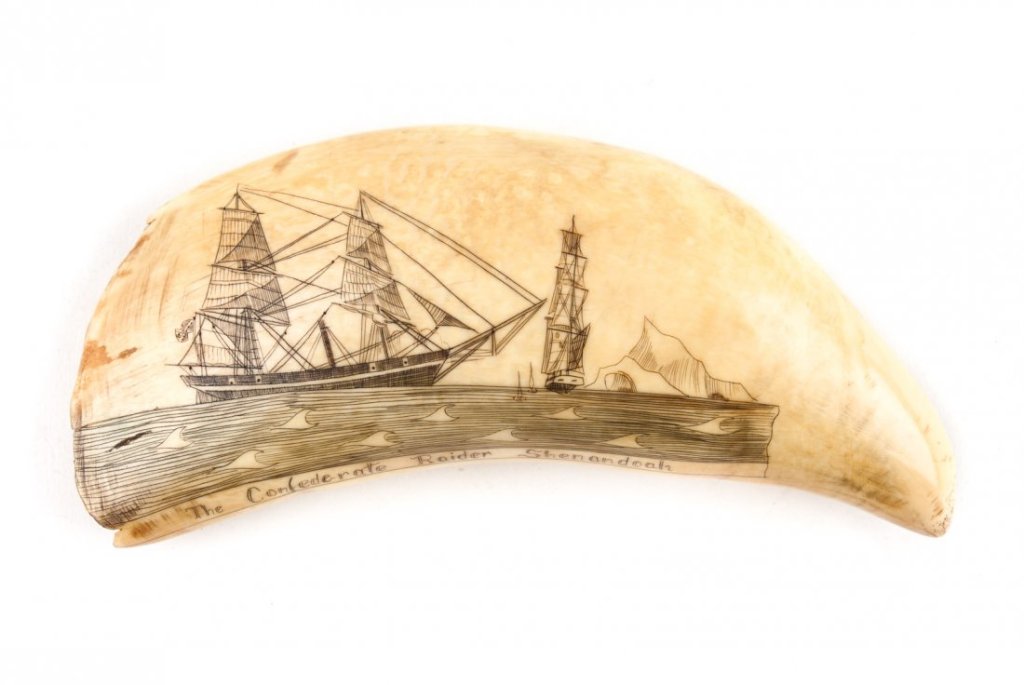
As every fool knows—or every fool of a Civil War buff should know—the Confederacy did not end with General Lee’s surrender at Appomattox; nor did it end when Uncle Joe surrendered to Uncle Billie in North Carolina.
No, nor did it end with the surrender of the Rebel forces in Texas. In fact, the last Confederate troops did not even surrender when Stand Waitie ordered his Confederate Cherokees to stand down in Oklahoma. No sir; the last Confederates to officially called it quits did not do so until November of 1865! Nor was it anywhere in the continental United States, but in Liverpool, England to the captain of a British man o’ war. And therein hangs the tale.

She began life as the good ship Sea King, a three masted, steel hulled sailing ship. She had an auxiliary power of steam, but her main means of cutting the waves was by wind power. She was built sturdy and she was built true, with solid teak planking for her decks. She was, as great-grandfather Thorp used to say, yar: easy to handle, responding to the wheel as sprightly as a young maid dancing about the Maypole in spring. She was built Clyde side in Scotland by Alexander Stephan and Sons, launched in August of 1863.
It wasn’t until the next year, however that the Confederate agents in Britain managed to get hold of this ship. On October 8, 1864, she set sail, ostensibly headed for Bombay to pick up a load of tea.
Coincidently, that same day the supply steamer Laurel set out from Liverpool; by the oddest of chances, the two vessels met at the Madeira Islands off of Portugal. As it turned out, instead of black tea, the Sea King took on a load of black gunpowder and heavy guns.
There, Captain James I. Waddell, with his officers and crew came aboard and began the conversion of the sleek clipper ship into the commerce raider the CSS Shenandoah and was officially commissioned on October 19, 1864. Initially, only the two 12 pounders previously on board could be fired, since the ship had not come with tackle for mounting the heavy ordnance; they could threaten potential targets, but not shoot. She was outfitted with four eight inch smoothbore cannon, two twelve pounder Whitworth rifled guns and two thirty-two pounders.
As with the German Imperial Navy against the British Fleet in both world wars, the Confederates knew they were no match for the might of the US Navy on the open seas, but that where they could hurt the US the most was by attacking her merchant fleet.
In a little over a year, the Shenandoah did its best to inflict as much pain on Yankee maritime commerce as possible.

Captain Waddell first sailed his ship around the horn of Africa and into the Indian Ocean. En route to Melbourne, Australia, she managed to take six prizes.
The Shenandoah spent three weeks in Melbourne, including a spell in dry dock for much needed repairs. She also received fresh stores, having depleted much of her on board victuals and other vitals.
During this time, the Rebel raider also recruited forty new crewmen. Waddell’s initial complement of men had been 17 men and two cabin boys. The crew was supplemented during the voyage out by impressing sailors from some of her captured prize ships. Impressment, it should be recalled, was a practice that Americans prior to the War of 1812 had found particularly odious when carried out by the English Navy. So the new recruits to the Shenandoah’s crew were warmly welcomed by Captain Waddell. Apparently the captain and his crew were also feted by some members of Melbourne society during their stay, although other Australians found the presence of the Rebel “privateers” in their midst something of a political embarrassment.
One editorial referred to the Shenandoah thus: “We cannot regard the Shenandoah as other than a marauding craft, and her officers and crew than as a gang of respectable pirates.” Given supposed British neutrality, the fact that the local government had allowed the commerce raider to stay as long as necessary to make repairs for war potentially had profound international consequences. There was also some suspicion that the ship’s officer were using the layover to obtain information about US ships in the region who may be potential targets.
Cruising first to the Carolines, she burned four whalers on April 3–4, virtually days before Lee’s surrender in Virginia. Thence Waddell steered his raider to the Aleutians, the Bering Sea and the Arctic Ocean, where the Shenandoah made of clean sweep of the whalers. All told, the Shenandoah netted some sixteen ships in the Arctic seas. The white whale itself could not have done a better job of revenge on the Yankee whalers.

On June 27, 1865, Captain Waddell and his crew learned from one prize, the Susan & Abigail out of San Francisco, that the Confederate capital of Richmond had fallen and General Lee surrendered in Virginia. However, upon reading the newspaper report, Waddell noted that President Davis had vowed that the “war would be carried on with re-newed vigor.”
So the Shenandoah kept on its mission, sweeping up more whalers and merchantmen across the Pacific and then began heading for San Francisco, believing the west coast port was poorly defended and vulnerable to attack.

However, on 2 August 1865, Captain Waddell learned from a British ship, the bark Barracouta, headed to Liverpool from San Francisco that not only had Generals Joe Johnston and Kirby Smith’s armies surrendered, but that President Jefferson Davis was also a prisoner. Realizing that the war was finally over, the Shenandoah hauled down her flag, dismounted her guns and received a new coat of paint to make it look like an ordinary clipper ship.
Waddell, however, resolved not to surrender to the Yankees, lest he and his men end up dangling from the yardarm of a Yankee warship. They set sail down the coast of South America and around Cape Horn, and thence sailed northward headed back towards England, with Yankee warships pursuing them for much of that time, finally arriving in Liverpool Harbor in the early November.
Entering the Mersey, she took on a pilot to guide her into port, but the pilot, going strictly by the book, refused to guide the Shenandoah in unless she was flying her national colors. So the Captain Waddell again raised the Confederate Ensign and came sailing into Liverpool under the Rebel flag.
Here the CSS Shenandoah officially surrendered to the HMS Donegal on November 6, 1865, the last surrender of the war. Captain Waddell personally walked up the steps of the Liverpool Town Hall where he presented a note, addressed to Lord Russell, then Prime Minister of Great Britain, formally surrendering his vessel to the British nation.
The Shenandoah in its brief naval career managed to sink or capture 38 vessels and capture a thousand prisoners. The Shenandoah was the only Confederate ship to ever circumnavigate the globe. Many of the crew, though claiming to be Confederates, were actually British citizens, but by claiming to be Rebels avoided imprisonment in England, since Her Majesty’s government paroled all former Confederates straighaway.
Those among the crew who actually were Americans eventually returned to the States when it was safe to do so, although a few had various adventures in Latin America in the meantime. As for the Shenandoah itself, it was sold to the Sultan of Zanzibar, who rechristened it after himself, calling it the El Majidi.

Alas, its career with the sultan was less than steller. Details are a bit fuzzy; she was either a cruiser in the Zanzibar Navy, a slave ship or a legitimate passenger liner—my guess is, probably a bit of all three. She was damaged in a hurricane at Zanzibar in 1872 and given a half-hearted patch job. She then set sail with a full load of 130 passengers and crew for Bombay and, still leaking from her previous injuries, sank en route.
For more strange tales and unusual events of the Civil War, read The Paranormal Presidency of Abraham LincolnThe Paranormal Presidency and Ghosts and Haunts of the Civil WarGhosts and Haunts of the Civil War. For the reader interested in the military career of famed author Ambrose Bierce, we recommend Ambrose Bierce and the Period of Honorable Strife, published by University of Tennessee Press.


